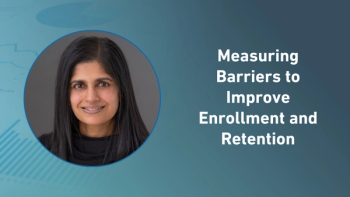
Addressing the Digital Divide in Decentralized Trials
In this video interview, Sunny Kumar, MD, partner at Informed Ventures, discusses how clinical operations leaders can close technology gaps in decentralized trials by provisioning devices and designing simple, intuitive tools to ensure equitable patient access.
In a recent video interview with Applied Clinical Trials, Sunny Kumar, MD, partner, Informed Ventures, discussed the slow adoption of DCT models despite their benefits in retention and diversity. Key barriers include high upfront costs (millions per trial) and the current down cycle in pharma investment. To address the digital divide, Kumar emphasized providing devices to patients rather than relying on their own, especially in under-resourced areas. Operational and cultural challenges, such as regulatory compliance and risk-aversion, contribute to a six-year lag in adopting clinical trial innovations. Generative AI is seen as a promising tool to reduce costs. Kumar also highlighted the need for tech platforms that fit seamlessly into the pharma ecosystem.
ACT: How can clinical operations leaders proactively address the digital divide to ensure that DCTs don’t inadvertently widen disparities in trial access and equity?
Kumar: Really important question, one of the things that we on the technology side are very mindful of is, as we put together these solutions, as we bring technology into domains like healthcare and pharma, how do we make sure that we're not inadvertently making some of the problems that we're trying to solve worse. For example, how do we not bring in some our inherent biases that we may have into our technology systems and then propagate those biases more widely, of course, unintentionally. As you point out, all of these solutions do involve some degree of technology. You are replacing, often, visits to the physician with things like your smartphone or your iPad, recognizing that these patients will have to have some at least fundamental sophistication with using an app, being able to input their symptoms, understanding how to interact with technology in that way. One key factor in order to prevent this digital divide that you mentioned is to make sure that we provision those patients with these devices, as opposed to requiring them to use their own devices. Interesting, we found that bring your own device trials actually tend to be more successful because patients like using their own device and they have in the familiarity of their own tool, as opposed to using a novel device, but making sure that we are able to provision that device for patients that need it, as opposed to expecting a patient to use their own, for example, in under resourced areas as these trials can be conducted all over the world in cases where an iPhone or an Android phone might be equivalent to a month or several months’ worth of salary, so making sure that we're mindful of that, and then reducing the barrier to actually using these devices as much as possible, making them simple intuitive and as easy to use as possible.
Newsletter
Stay current in clinical research with Applied Clinical Trials, providing expert insights, regulatory updates, and practical strategies for successful clinical trial design and execution.




